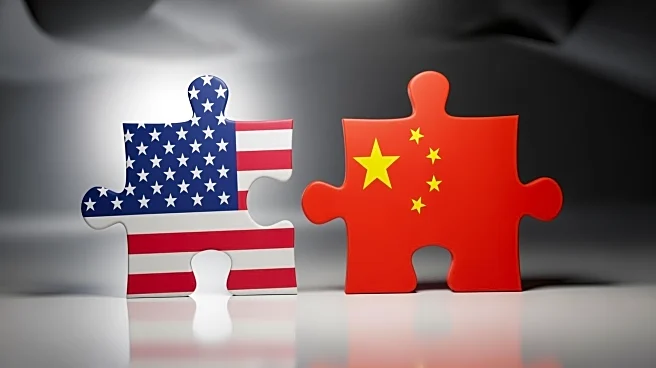What's Happening?
The United States is reassessing its trade relationship with China, aiming to reduce its heavy reliance on Chinese imports. This shift is driven by the strategic need to diversify supply chains and enhance economic security. In 2024, the U.S. faced a trade deficit
of over $295 billion with China, highlighting the imbalance in their economic relationship. The focus is on critical industries such as semiconductors, pharmaceuticals, and rare earth elements, where dependence on China poses significant risks. The U.S. is looking to strengthen ties with democratic, market-based nations to create a more resilient and secure economic framework.
Why It's Important?
Reducing reliance on China is crucial for the U.S. to maintain economic autonomy and security. The current trade imbalance exposes the U.S. to potential geopolitical risks and supply chain disruptions. By diversifying trade partners, the U.S. can mitigate these risks and foster a more stable economic environment. This strategy also aligns with broader geopolitical goals, as it seeks to build stronger alliances with countries that share democratic values and market principles. The move could lead to more predictable financial markets and reduce the volatility associated with U.S.-China trade tensions.
What's Next?
The U.S. is expected to continue its efforts to diversify its trade relationships, focusing on building supply chains with trusted allies. This will involve strategic investments in domestic industries and collaboration with international partners to reduce dependency on China. The transition will require time and commitment, but it is seen as a necessary step to ensure long-term economic stability and security. Policymakers and industry leaders will need to work together to implement these changes effectively.













